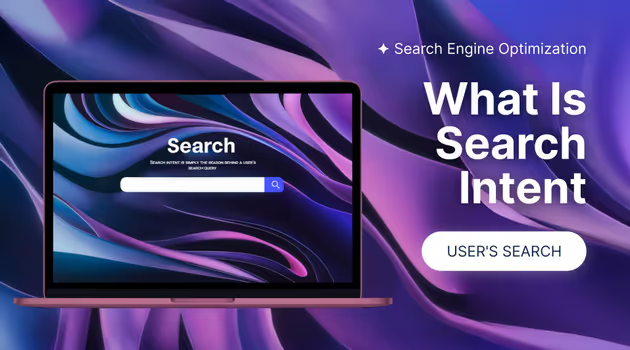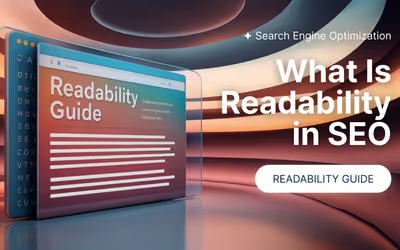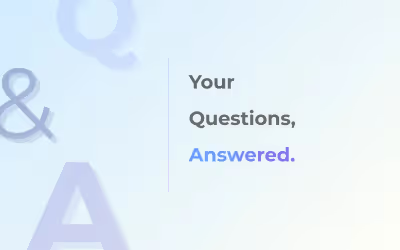What is Search Intent and Why Does it Matter for SEO?
Search intent is simply the reason behind a user's search query. When someone types something into Google, they’re usually looking for something specific—whether it's information, a product to buy, or a website to visit.
Understanding search intent helps businesses and website owners create content that matches what users are looking for. This not only improves your chances of ranking higher but also ensures your visitors find what they need, making their experience much better.
For example, if someone searches "how to fix a flat tire," their intent is informational—they want to learn how to solve a problem. If they search for "buy car tire repair kit," that’s a transactional search—they want to make a purchase. By understanding these differences, you can optimize your content to meet the exact needs of your audience, increasing your chances of ranking higher on Google.
In short, search intent plays a huge role in SEO because it guides how content is created, how keywords are used, and how well your website matches the needs of your audience . When you get this right, both your rankings and your users' satisfaction improve.
Types of Search Intent and How They Impact SEO
Understanding the different types of search intent is vital to creating content that precisely replicates what individuals are looking for. They are generally categorized into three: informational intent, navigational intent, and transactional intent.
Informational Intent Search
When a user has informational intent, they’re looking for answers to questions or seeking information on a particular topic. They’re not yet ready to make a purchase or navigate to a specific website. This type of search is often broad and can be a part of the research stage in a buyer’s journey.
Examples:
- "how to bake a chocolate cake"
- "what is search intent"
- "history of the Eiffel Tower"
How it impacts SEO: To satisfy informational intent, your content should focus on providing detailed, accurate, and helpful information. Blogs, guides, how-tos, and FAQs are perfect formats for these queries. Google loves this type of content because it directly answers a searcher’s question.
Navigational Search Intent
Navigational intent occurs when a user is trying to find a specific website or page. They already know what they're looking for and are simply trying to get there as quickly as possible. This type of search often includes brand names or specific website URLs.
Examples:
- "Facebook login page"
- "YouTube official site"
- "Nike homepage"
How it impacts SEO: With navigational intent, the user has a clear goal—get to a specific website. This means your content should include brand names and be optimized for keywords related to specific websites or pages. It's important for businesses to ensure their site is easily accessible through search results, as users may skip to the correct website directly from the search engine.
Transactional Search Intent
Transactional intent is when users are ready to take action, usually involving a purchase or some form of conversion. They’re looking for a product, service, or solution and are close to making a decision. These searches indicate strong intent to buy or engage.
Examples:
- "buy running shoes online"
- "best price for iPhone 14"
- "order pizza near me"
How it impacts SEO: For transactional intent, your content should be focused on guiding the user to take the next step—usually making a purchase or booking a service. Optimizing product pages, including compelling calls to action, and providing clear product descriptions can help convert these searches into sales.
How Google Interprets and Ranks Based on Search Intent
Google’s algorithm is built to interpret and understand search intent, helping it deliver the most relevant results. By analyzing user behavior and search queries, Google can figure out what people really want when they type something into the search bar.
Understanding how Google interprets search intent and ranks results is key to improving your SEO strategy.
Google Search Intent Signals
Google uses various search intent signals to know what users need and deliver the best results. Such signals include:
- Keyword signals
Google checks the terms used in the query to ascertain the reason for searching. For example, "buy" is an indication of transactional intent, and "how to" represents informational intent.
- User behavior signals
How users interact with search results also signals something to Google. When a user clicks on a result and stays on the page, Google sees it as a good signal. A high bounce rate may indicate that the page did not match the purpose of the search.
- Content signals
The type of content Google indexes—such as blogs, product pages, videos, or FAQs—helps Google understand the intent behind the search query. Google wants to show users the most relevant content, whether it's an article, video, or product listing.
How it impacts SEO: By optimizing your content based on keywords that match the user’s intent and improving on-page user engagement (such as providing helpful content), you can increase your chances of ranking well in search results.
Search Intent SEO: Optimizing for Searcher Intent
Match the right content to the right intent:
- For informational intent, create detailed guides, blog posts, and answer-based content (e.g., FAQs).
- For transactional intent, focus on product pages, clear pricing, and easy navigation that leads to purchases.
- For navigational intent, ensure your brand name and website appear clearly in search results, and ensure your site’s navigation is easily accessible.
Use the right keywords
Incorporate long-tail keywords that reflect searcher intent. For example, use "buy" and "best" for transactional searches, "how to" for informational queries, and brand names for navigational queries.
Content structure and UX
Make sure your content is structured in a way that matches the search intent. Answer questions directly for informational queries, include trust signals (like reviews) for transactional searches, and provide quick links for navigational searches.
Optimize meta tags and titles
Titles and meta descriptions should clearly reflect the searcher’s intent. If you're targeting a transactional query, your title should feature product names or services. For informational queries, include phrases like "guide" or "how-to."
Ensure mobile-friendliness
As more searches are done on mobile, Google takes mobile usability into account when ranking results. A mobile-friendly site improves user experience and helps your content match the searcher’s needs.


